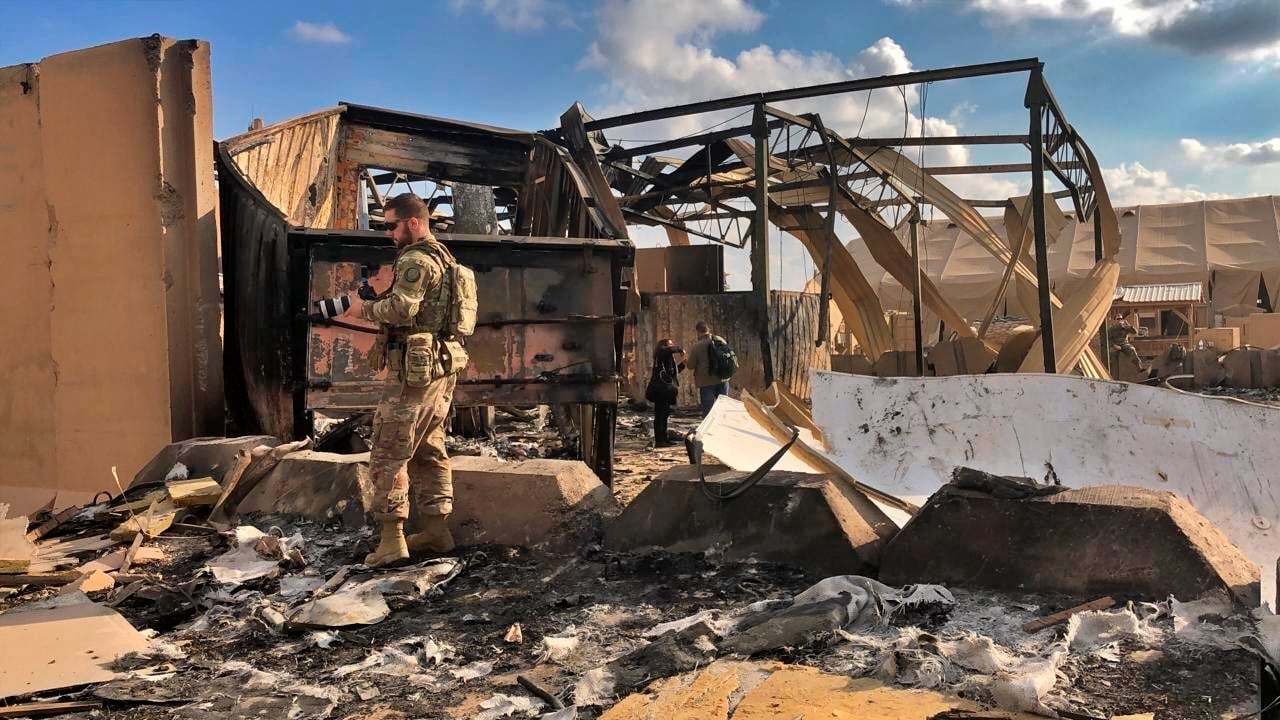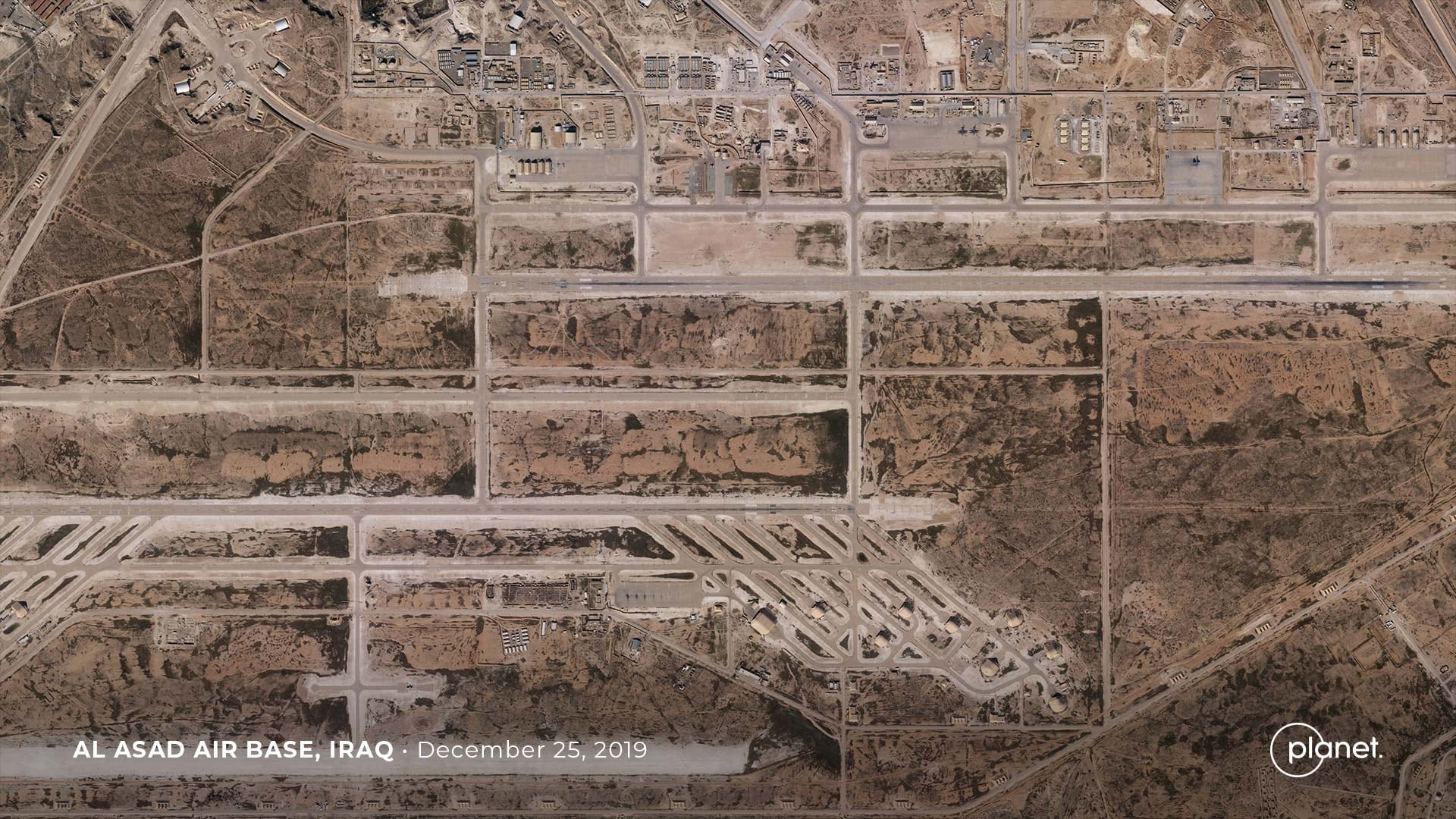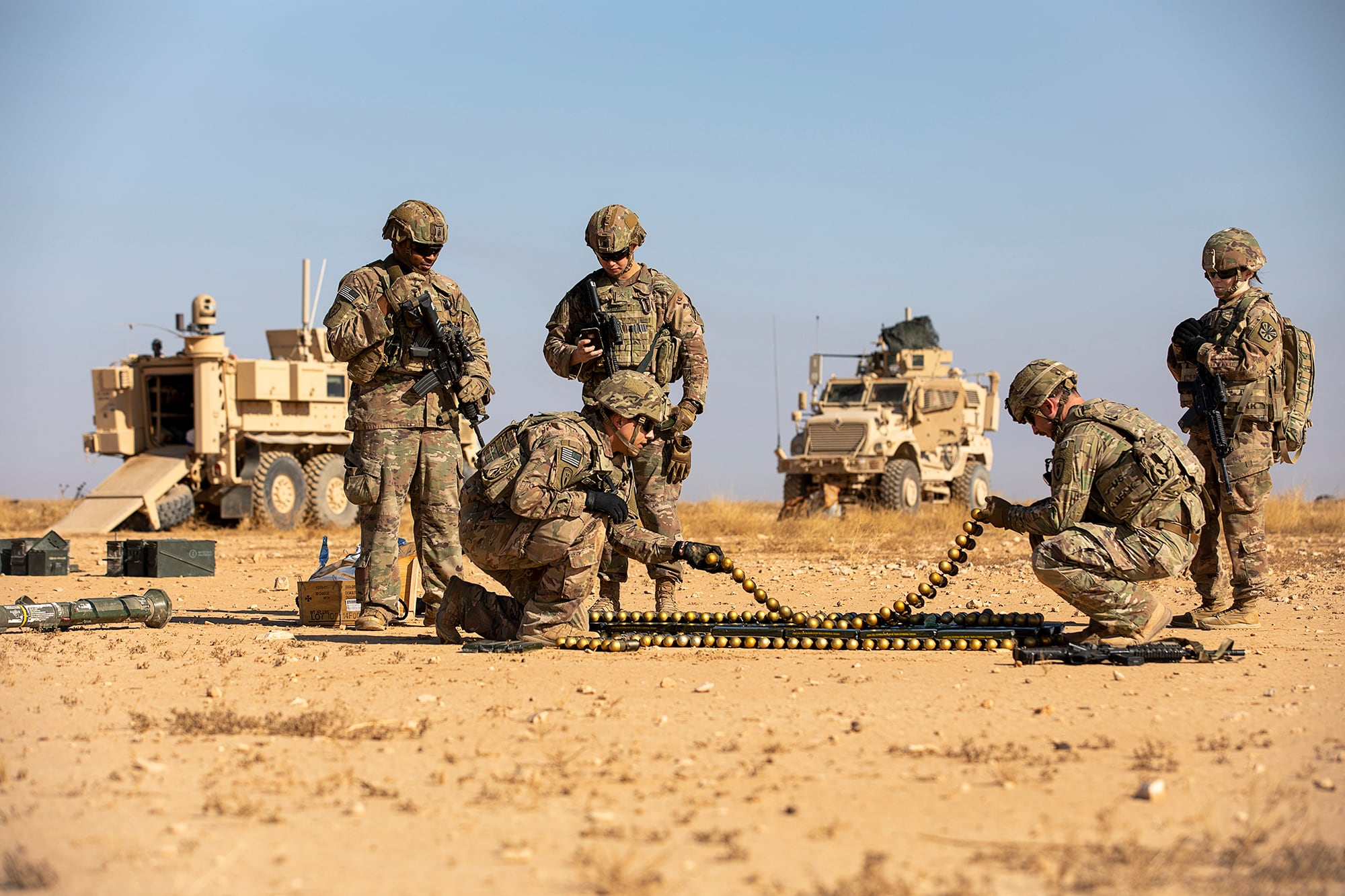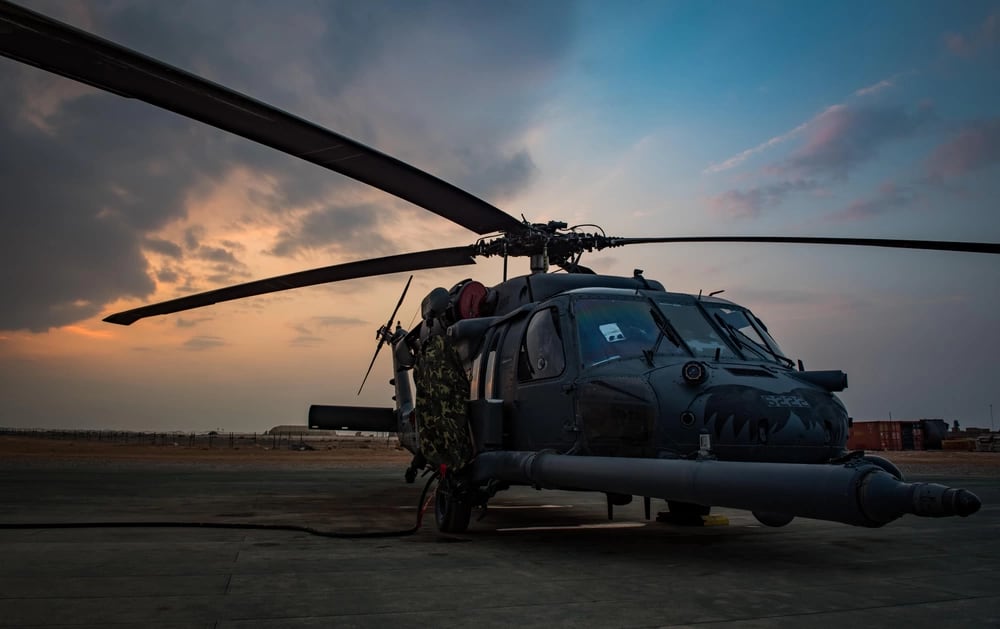Three years after Iran fired more than a dozen ballistic missiles at U.S. troops in Iraq in January 2020, seven American airmen have been recognized for their actions overhead.
The HH-60G Pave Hawk helicopter crews who served at Al Asad Air Base, Iraq, on Jan. 7-8, 2020, helped ensure thousands of Americans were safe following the first overseas ballistic missile attack on U.S. citizens in over 30 years, the Air Force said.
Officials honored their work at a Dec. 12 ceremony at Davis-Monthan Air Force Base, Arizona.
RELATED

“Our rescue airmen, through very sound leadership, managed to save all of our rescue Airmen from two direct impacts on our compound,” 55th Rescue Squadron commander Lt. Col. Brian Losacker said in a release. “These men in the aircraft clearly demonstrated notable courage, the type that will be written into history.”
Maj. Michael Madden, who flew Pave Hawk “Jolly 46,” earned a form of the Distinguished Flying Cross denoting valor.
The others received a version of the Air Medal that also signifies valor. They included helicopter pilots Capt. Charles Heisler and Capt. Bryan Tordoff; and special mission aviators Master Sgt. Christian Freeman, Master Sgt. James Hollenbach, Tech. Sgt. Robert Rutledge and Tech. Sgt. Michael Buchalski.
Tordoff, Hollenbach and Rutledge were also part of Jolly 46; Heisler, Freeman and Buchalski comprised another HH-60G crew, “Jolly 47.” All were members of the 46th Expeditionary Rescue Squadron.
RELATED

Ahead of the attack on Al Asad, the airmen were assigned to evacuate American civilians from the U.S. Embassy in Baghdad as Iraqis rioted in the capital. Rescue crews returned to Al Asad as troops prepared for an “imminent missile attack,” according to the medal citations.
Gen. David Thompson, the Space Force’s vice chief of space operations, has publicly claimed the missiles were airborne for six minutes. A Space Force unit that tracks missiles from Colorado sounded the alarm for their fellow service members on the other side of the world.
The airmen feared a “mass casualty event,” the citation said. Their squadron was the only search-and-rescue helicopter unit around.
Then they watched it happen.
“[Madden] witnessed missile launches over the horizon … then reappear as the first missiles struck the base,” the citation said.
RELATED

Because ground support crews were fleeing to safety, the HH-60Gs needed to gas up using their own onboard refueling systems — an unusual move reserved for emergencies. Madden directed a trio of Pave Hawks to regroup at a desert staging area, from which they could launch support missions as needed.
Buchalski’s own race to refuel ensured that his crew could escape “minutes before the rescue compound where he worked and lived was struck by the first wave of missiles,” the Air Force said.
Buchalski made sure his helicopter was clear of any hazards; Rutledge stood watch and prepared his own aircraft to respond.
“After witnessing the first missile volley, [Freeman] rapidly worked aircraft configuration changes and performance data in preparation for a mass casualty medical event, all while manning his weapons for threats and potential follow-on attack,” the Air Force said.
Jolly 46 and 47 then headed back to Al Asad, dodging “extreme airspace congestion and confusion of a rushed evacuation” so the team could treat casualties and secure the base.
RELATED

The second volley of incoming missiles missed the helicopters by a half-mile, the citation said. They were the first aid crews on the scene.
The aircrews sent pararescuemen into Al Asad, conducted security sweeps, and assessed damage while fires raged, explosives continued to detonate and aircraft fled without the ability to communicate.
Heisler kept in touch with commanders at the Air Operations Center at Al Udeid Air Base in Qatar to figure out options for medical care and possible flight paths.
“Buchalski provided continual lookout and direction to the pilots to ensure airborne deconfliction, and directed on-scene search efforts and landings to insert pararescue teams,” the Air Force said.
“Rutledge was vital in … scanning for unmanned aircraft,” his citation added.
RELATED

Madden flew under duress for over 13 hours, the Air Force noted. Tordoff refueled his helicopter in midair and relocated to an unnamed base to serve as backup for other search-and-rescue crews.
More than 100 troops suffered traumatic brain injuries. The attack damaged runways, tents, equipment and a helicopter. No one died.
“The Air Medal with Valor is awarded to military personnel who distinguish themselves by single acts of heroism or extraordinary achievement in combat or combat support while in participation of aerial flight,” according to the Air Force. “The Distinguished Flying Cross with Valor is awarded to military personnel who distinguish themselves by single acts of heroism or extraordinary achievement while participating in aerial flight.”
At the same award ceremony, pararescuemen Master Sgt. Christopher Wilson and Tech. Sgt. Sean Hopper also received Bronze Star medals for their actions during the U.S. military’s chaotic withdrawal from Afghanistan in 2021.
“These airmen exemplify the rescue and attack mission of the 355th Wing,” the Air Force said.
Rachel Cohen is the editor of Air Force Times. She joined the publication as its senior reporter in March 2021. Her work has appeared in the Washington Post, the Frederick News-Post (Md.), Air and Space Forces Magazine, Inside Defense, Inside Health Policy and elsewhere.





